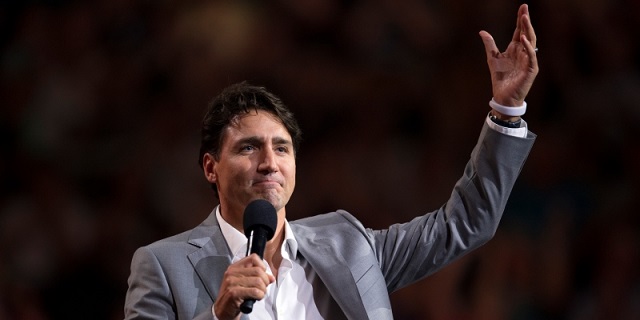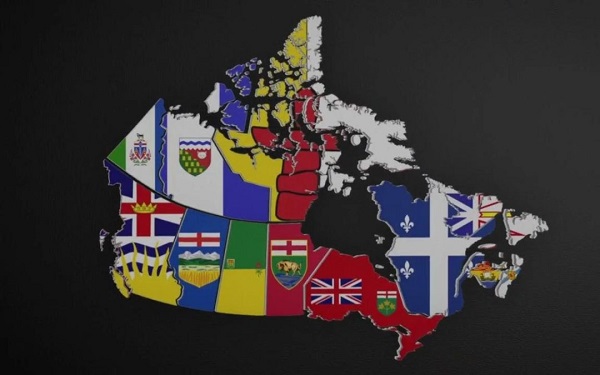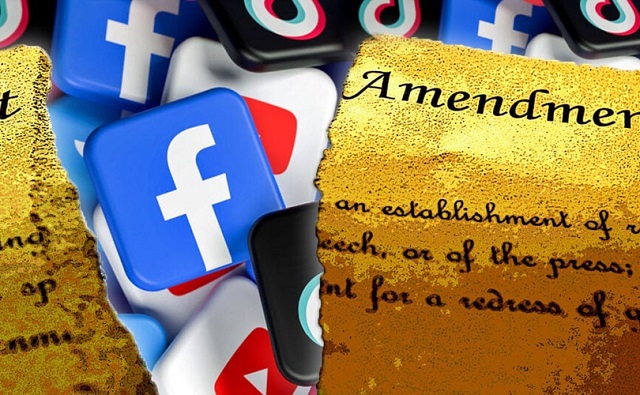Fraser Institute
Canadians should decide what to do with their money—not politicians and bureaucrats

From the Fraser Institute
By Jake Fuss and Grady Munro
Since taking office in 2015, the Trudeau government has expanded the federal government’s role in making decisions for individuals and families, rather than letting Canadians decide on their own. And with its latest federal budget, which it tabled last week, it once again decided that politicians and bureaucrats should determine what people want and need, rather than the people themselves.
Indeed, during its tenure the Trudeau government has introduced a slew of new programs (e.g. national dental care, $10-a-day day care), which have contributed to an expected $227.4 billion increase in annual federal program spending (total spending minus debt interest costs) from 2014/15 to 2024/25. And according to the budget, due to new programs such as national pharmacare, annual program spending will increase by another $58.4 billion by 2028/29.
In many cases the impetus for these new programs has been to increase people’s access to certain goods and services (most of which were already provided privately). But the Trudeau government has consistently ignored the fact that there are always two ways for the government to help provide a good or service—tax and spend to directly provide it, or lower taxes and leave more money in people’s pockets so they can make their own decisions—and instead simply opted for more government.
Consequently, Canadians now pay higher taxes. In 2014/15 (the year before Prime Minister Trudeau was elected), total federal revenues represented 14.0 per cent of the economy (as measured by GDP) compared to 16.6 per cent in 2024/25—meaning taxes have grown faster than the economy.
More specifically, the total tax bill (including income taxes, sales taxes, property taxes and more) of the average Canadian family has increased from 44.7 per cent of its income in 2015 to 46.1 per cent in 2023. That means the average family must work five extra days to pay off the additional tax burden.
And families are feeling the burden. According to polling data, 74 per cent of Canadians believe the average family is overtaxed. And while the Trudeau government did introduce tax changes in 2016 for middle-income families, research shows that 86 per cent of these families ended up paying higher taxes as a result. Why? Because while the government reduced the second-lowest federal personal income tax rate from 22.0 to 20.5 per cent, it simultaneously eliminated several tax credits, which effectively raised taxes on families that previously claimed these credits.
Finally, many Canadians don’t believe their tax dollars are being put to good use. When polled, only 16 per cent of Canadians said they receive good or great value for their tax dollars while 44 per cent said they receive poor or very poor value.
Simply put, the Trudeau government has consistently empowered politicians and bureaucrats to decide how Canadians should use their hard-earned money, rather than allowing individuals and families to make those decisions. With its 2024 budget, once again the Trudeau government has demonstrated its belief that it knows best.
Authors:
Fraser Institute
Ottawa continues to infringe in areas of provincial jurisdiction

From the Fraser Institute
By Tegan Hill and Jason Clemens
The Alberta Next panel—tasked with assessing how Alberta can protect its economy, assert its sovereignty within Canada, and defend its provincial rights after years of federal government intervention—has concluded its townhall sessions. The Smith government has repeatedly called for the federal government to stay in its lane, and according to a recent study, governments work better when they do.
The Canadian federation was intended to be decentralized. The powers and responsibilities of the federal and provincial governments are defined in the constitution. The federal government was given power over the regulation of trade and commerce, the postal service, national defence, navigation and shipping, and criminal justice. It also has the power to raise money by any form of taxation. The provincial governments were given power over natural resources, health care, welfare, education and overseeing municipal governments. Some areas, including certain aspects of the environment, entail joint or shared responsibility.
There are self-evident reasons for clearly dividing powers between national and provincial governments. There are some policies, such as national defence, where it makes obvious sense to have one national policy covering the entire country.
At the same time, there are numerous areas of responsibility where it makes an equal amount of sense to have the provinces exclusively responsible so they’re empowered to address areas and issues with more localized policies. Such a decentralized approach also allows for more experimentation and innovation, so provinces can learn from one another.
This is certainly the case with respect to welfare reform in the 1990s after Ottawa stopped interfering with the provinces’ delivery and regulation of welfare. This led to innovations by some provinces, and many of the successful reforms were copied by other provinces.
Yet more recently, the federal government has interfered in areas of provincial jurisdiction, which not only impedes the effective delivery of provincial services but also fuels regional tensions.
For instance, the Trudeau government increased federal involvement in areas of provincial jurisdiction via new dental, pharmacare and daycare plans. The federal government’s $10-a-day daycare, for example, has been disastrous, fuelling massive shortages across Canada. Some daycare centres have even exited the federal plan because government interference has threatened their ability to provide quality care.
Federal energy policies, such as the cap imposed exclusively on oil and gas emissions and new electricity regulations (which mandate all provincial electricity grids are decarbonized by 2035), have fuelled regional frustrations.
Consider that Quebec separatism essentially died during the Harper years, when the federal government left the provinces alone in their areas of jurisdiction. The provincial political party the Parti Quebecois (PQ) was reduced to 10 seats with just 17 per cent of the vote in 2018, for instance, but is now poised to form a majority government in the next Quebec election with the PQ committed to another sovereignty referendum vote. And there’s now a real sovereignty movement in both Alberta and Saskatchewan, with approximately three-in-10 Albertans (30 per cent) and one-third of Saskatchewians (33 per cent) indicating they would vote to leave the federation.
Provincial governments are fed up with Ottawa’s involvement in areas of provincial jurisdiction at the same time that federal policymakers have neglected areas of exclusive federal jurisdiction such as defence and criminal justice. History shows that Canada works best when governments stay in their lane. It’s time for the Carney government to change course and get out of provincial matters and focus on federal priorities.
Business
Canada’s economic performance cratered after Ottawa pivoted to the ‘green’ economy

From the Fraser Institute
By Jason Clemens and Jake Fuss
There are ostensibly two approaches to economic growth from a government policy perspective. The first is to create the best environment possible for entrepreneurs, business owners and investors by ensuring effective government that only does what’s needed, maintains competitive taxes and reasonable regulations. It doesn’t try to pick winners and losers but rather introduces policies to create a positive environment for all businesses to succeed.
The alternative is for the government to take an active role in picking winners and losers through taxes, spending and regulations. The idea here is that a government can promote certain companies and industries (as part of a larger “industrial policy”) better than allowing the market—that is, individual entrepreneurs, businesses and investors—to make those decisions.
It’s never purely one or the other but governments tend to generally favour one approach. The Trudeau era represented a marked break from the consensus that existed for more than two decades prior. Trudeau’s Ottawa introduced a series of tax measures, spending initiatives and regulations to actively constrain the traditional energy sector while promoting what the government termed the “green” economy.
The scope and cost of the policies introduced to actively pick winners and losers is hard to imagine given its breadth. Direct spending on the “green” economy by the federal government increased from $600 million the year before Trudeau took office (2014/15) to $23.0 billion last year (2024/25).
Ottawa introduced regulations to make it harder to build traditional energy projects (Bill C-69), banned tankers carrying Canadian oil from the northwest coast of British Columbia (Bill C-48), proposed an emissions cap on the oil and gas sector, cancelled pipeline developments, mandated almost all new vehicles sold in Canada to be zero-emission by 2035, imposed new homebuilding regulations for energy efficiency, changed fuel standards, and the list goes on and on.
Despite the mountain of federal spending and regulations, which were augmented by additional spending and regulations by various provincial governments, the Canadian economy has not been transformed over the last decade, but we have suffered marked economic costs.
Consider the share of the total economy in 2014 linked with the “green” sector, a term used by Statistics Canada in its measurement of economic output, was 3.1 per cent. In 2023, the green economy represented 3.6 per cent of the Canadian economy, not even a full one-percentage point increase despite the spending and regulating.
And Ottawa’s initiatives did not deliver the green jobs promised. From 2014 to 2023, only 68,000 jobs were created in the entire green sector, and the sector now represents less than 2 per cent of total employment.
Canada’s economic performance cratered in line with this new approach to economic growth. Simply put, rather than delivering the promised prosperity, it delivered economic stagnation. Consider that Canadian living standards, as measured by per-person GDP, were lower as of the second quarter of 2025 compared to six years ago. In other words, we’re poorer today than we were six years ago. In contrast, U.S. per-person GDP grew by 11.0 per cent during the same period.
Median wages (midpoint where half of individuals earn more, and half earn less) in every Canadian province are now lower than comparable median wages in every U.S. state. Read that again—our richest provinces now have lower median wages than the poorest U.S. states.
A significant part of the explanation for Canada’s poor performance is the collapse of private business investment. Simply put, businesses didn’t invest much in Canada, particularly when compared to the United States, and this was all pre-Trump tariffs. Canada’s fundamentals and the general business environment were simply not conducive to private-sector investment.
These results stand in stark contrast to the prosperity enjoyed by Canadians during the Chrétien to Harper years when the focus wasn’t on Ottawa picking winners and losers but rather trying to establish the most competitive environment possible to attract and retain entrepreneurs, businesses, investors and high-skilled professionals. The policies that dominated this period are the antithesis of those in place now: balanced budgets, smaller but more effective government spending, lower and competitive taxes, and smart regulations.
As the Carney government prepares to present its first budget to the Canadian people, many questions remain about whether there will be a genuine break from the policies of the Trudeau government or whether it will simply be the same old same old but dressed up in new language and fancy terms. History clearly tells us that when governments try to pick winners and losers, the strategy doesn’t lead to prosperity but rather stagnation. Let’s all hope our new prime minister knows his history and has learned its lessons.
-

 Business2 days ago
Business2 days agoBank of Canada governor warns citizens to anticipate lower standard of living
-

 International2 days ago
International2 days agoUS Reportedly Weighing Military Strikes On Narco Targets Inside Venezuela
-

 Alberta2 days ago
Alberta2 days agoGondek’s exit as mayor marks a turning point for Calgary
-

 International2 days ago
International2 days agoSagrada Familia Basilica in Barcelona is now tallest church in the world
-

 Agriculture2 days ago
Agriculture2 days agoCloned foods are coming to a grocer near you
-

 Business15 hours ago
Business15 hours agoYou Won’t Believe What Canada’s Embassy in Brazil Has Been Up To
-

 Censorship Industrial Complex15 hours ago
Censorship Industrial Complex15 hours agoSenate Grills Meta and Google Over Biden Administration’s Role in COVID-Era Content Censorship
-

 Business13 hours ago
Business13 hours agoMystery cloaks Doug Ford’s funding of media through Ontario advertising subsidy















